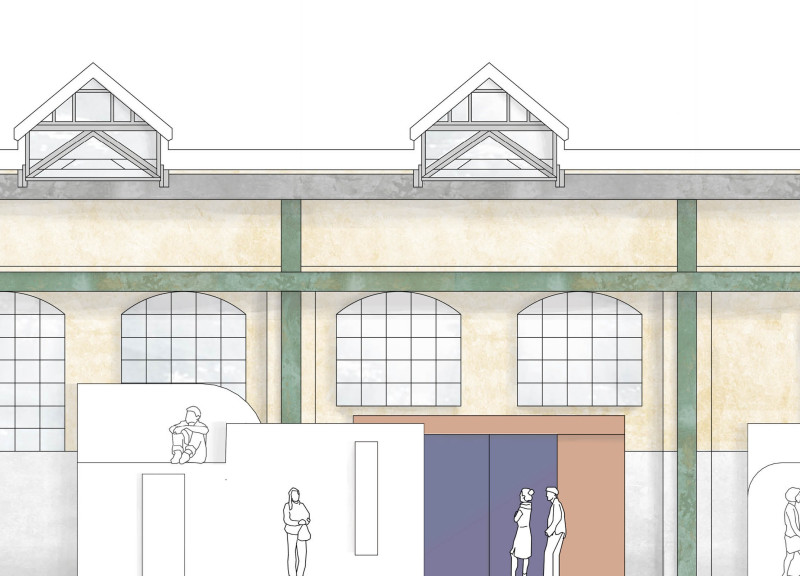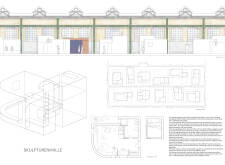5 key facts about this project
The design consists of thoughtfully arranged micro-units that offer flexibility in living arrangements while preserving the industrial character of the existing structure. The architectural approach prioritizes natural light through extensive glazing, interspersed with robust materials that maintain structural integrity. This project reflects a commitment to sustainability and local heritage, making it relevant in today's context of urban housing challenges.
Innovative Use of Space and Materiality
One of the unique aspects of Skulpturenhalle is its approach to merging contemporary architectural language with the site’s historical context. The internal spatial configuration diverges from typical housing layouts, incorporating curved forms that soften the industrial aesthetic. This design encourages fluid movement and interaction among residents, differentiating it from other residential projects that often rely on traditional linear layouts. The use of materials such as concrete, glass, steel, wood, and aluminum was carefully chosen to enhance both functionality and aesthetic appeal. Concrete provides structural support while allowing the brilliance of large glass openings, which facilitate natural light while connecting indoor and outdoor environments. Wood finishes add warmth to the interiors, creating a more inviting atmosphere.
Community-Centric Design and Sustainability
A critical component of the project is its focus on community. The design integrates communal areas where residents can collaborate and engage, promoting a strong sense of belonging. This aligns with the broader objective of creating micro-communities within urban landscapes. Further, the adaptive reuse of the building addresses sustainability challenges; by transforming an existing structure rather than constructing new, there is a significant reduction in resource consumption and environmental impact.
The Skulpturenhalle project exemplifies a contemporary solution to urban housing dilemmas while respecting and enhancing existing architectural heritage. For a comprehensive understanding, readers are encouraged to explore elements like architectural plans, architectural sections, and architectural designs that further illustrate the unique ideas behind this project.























